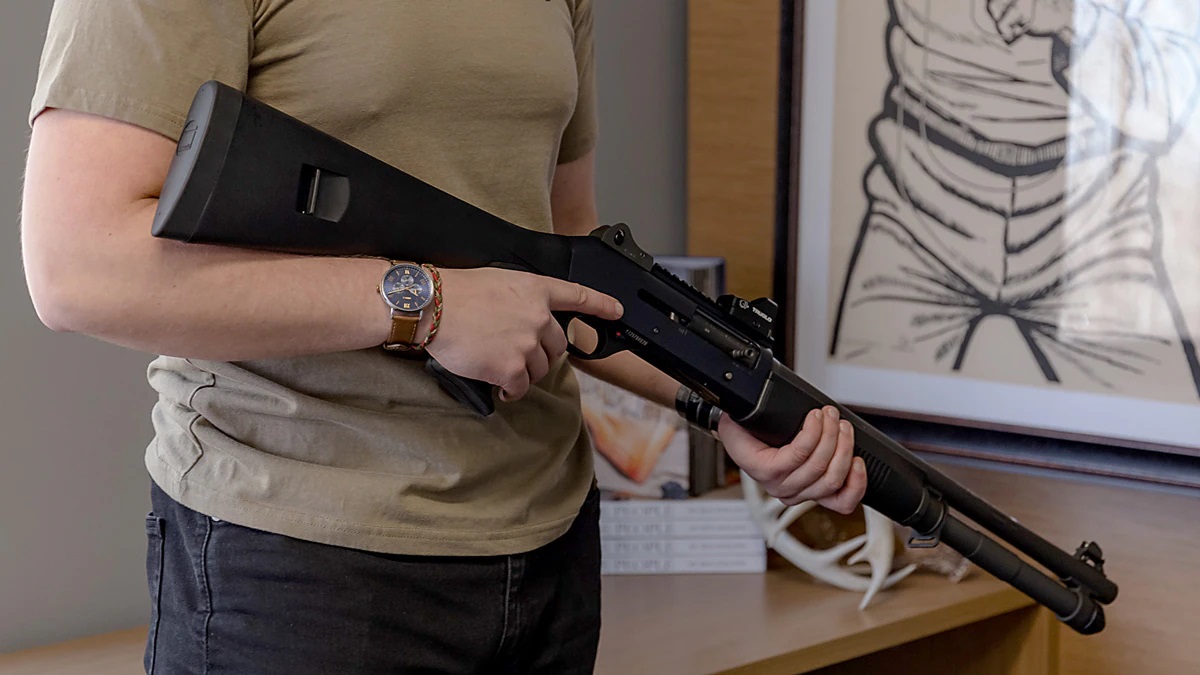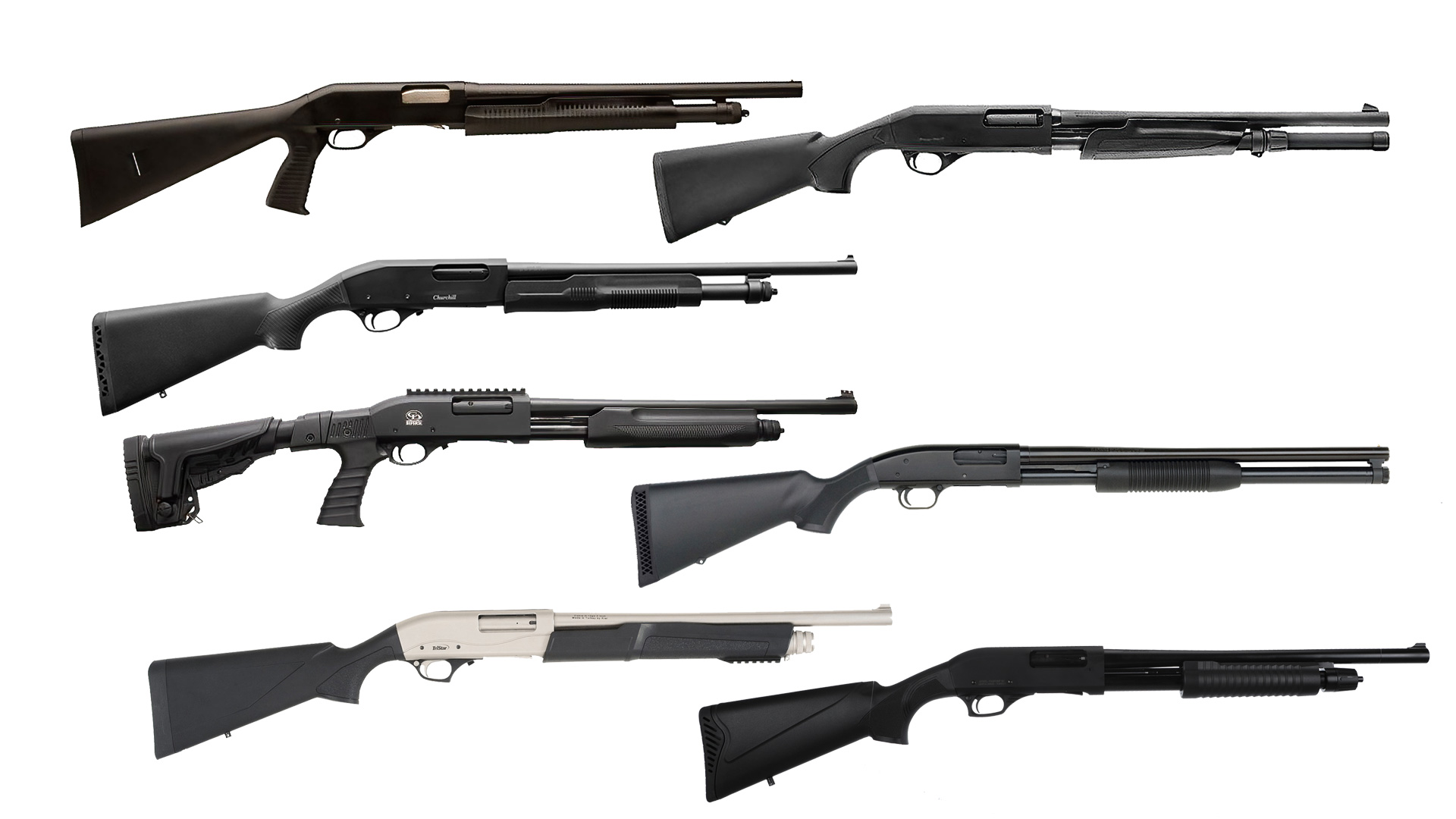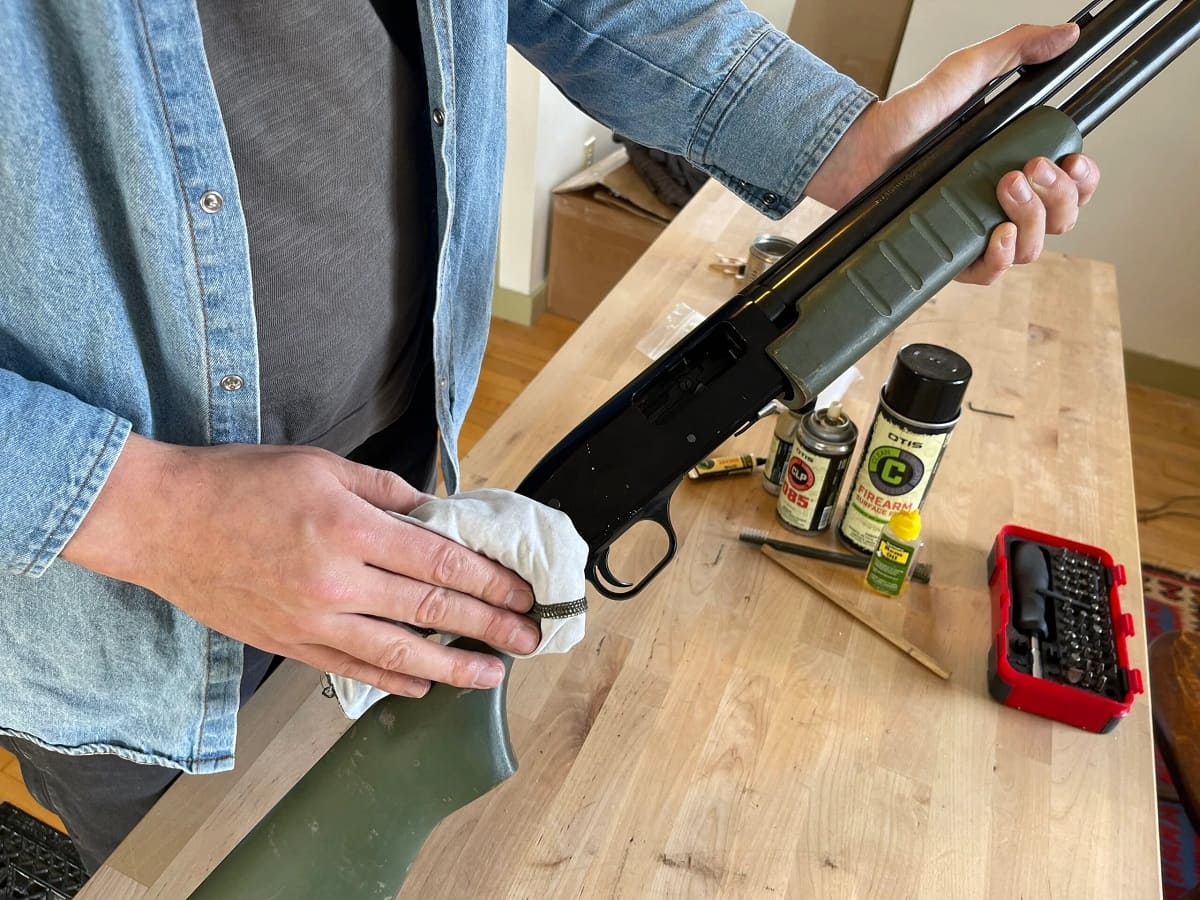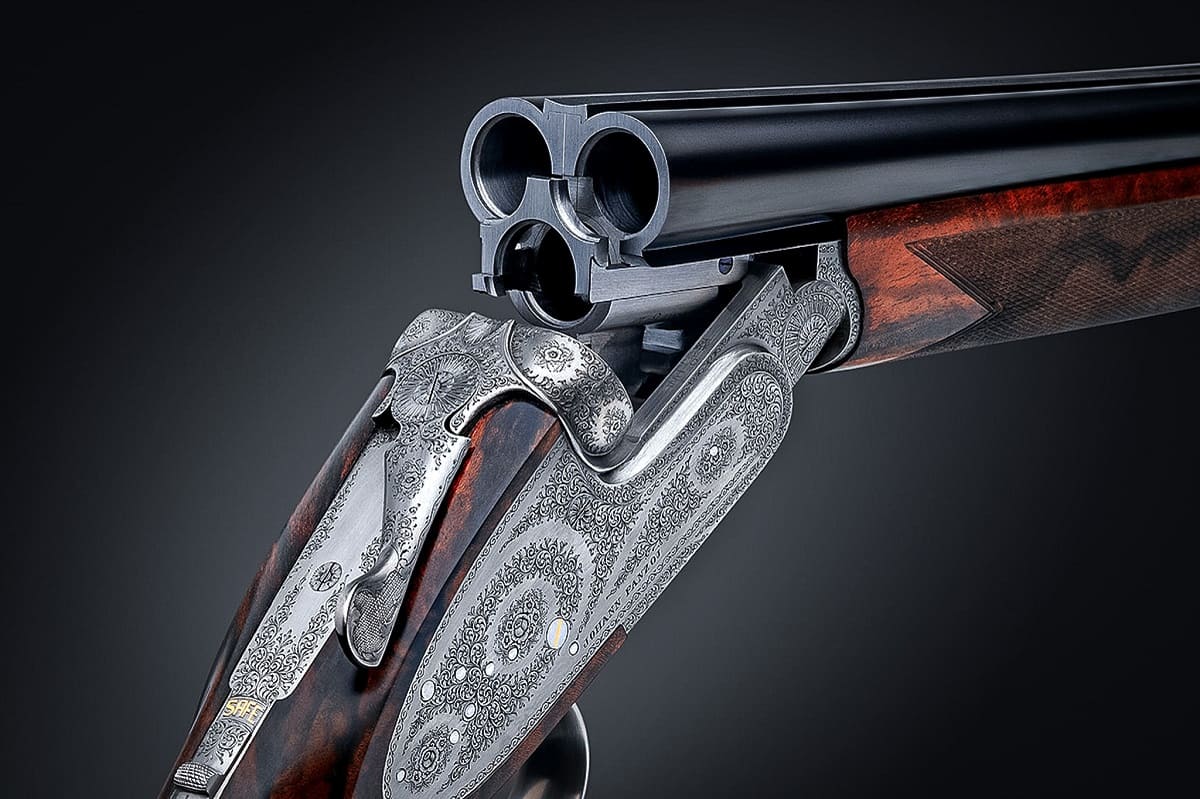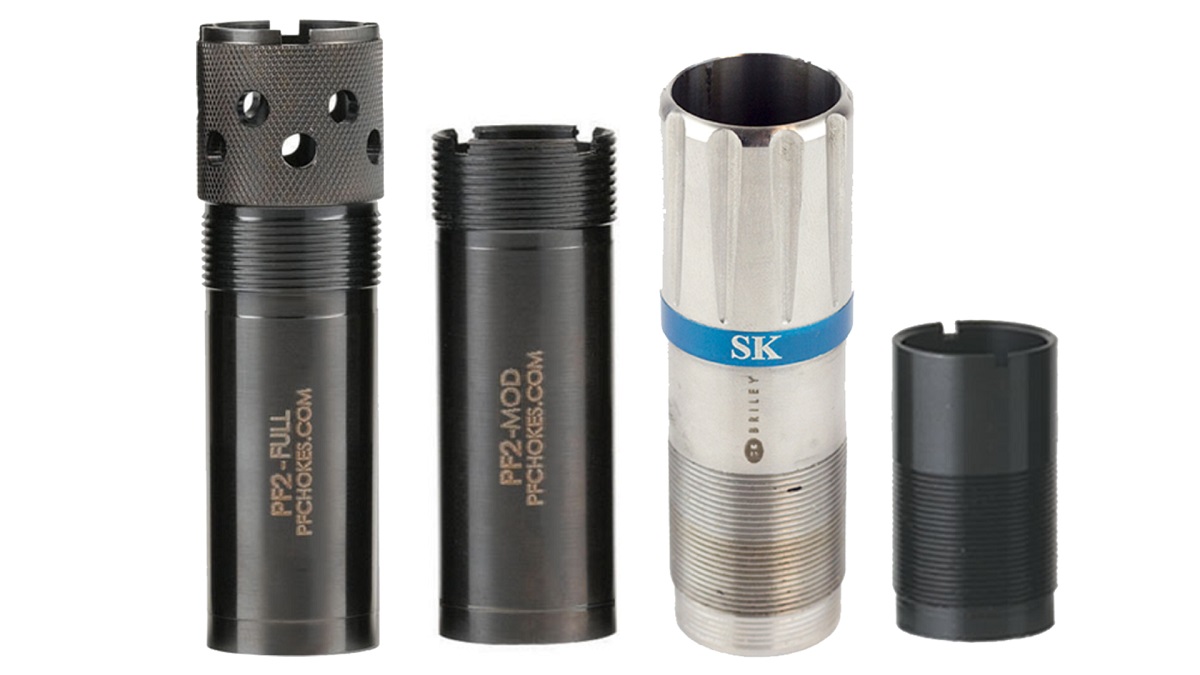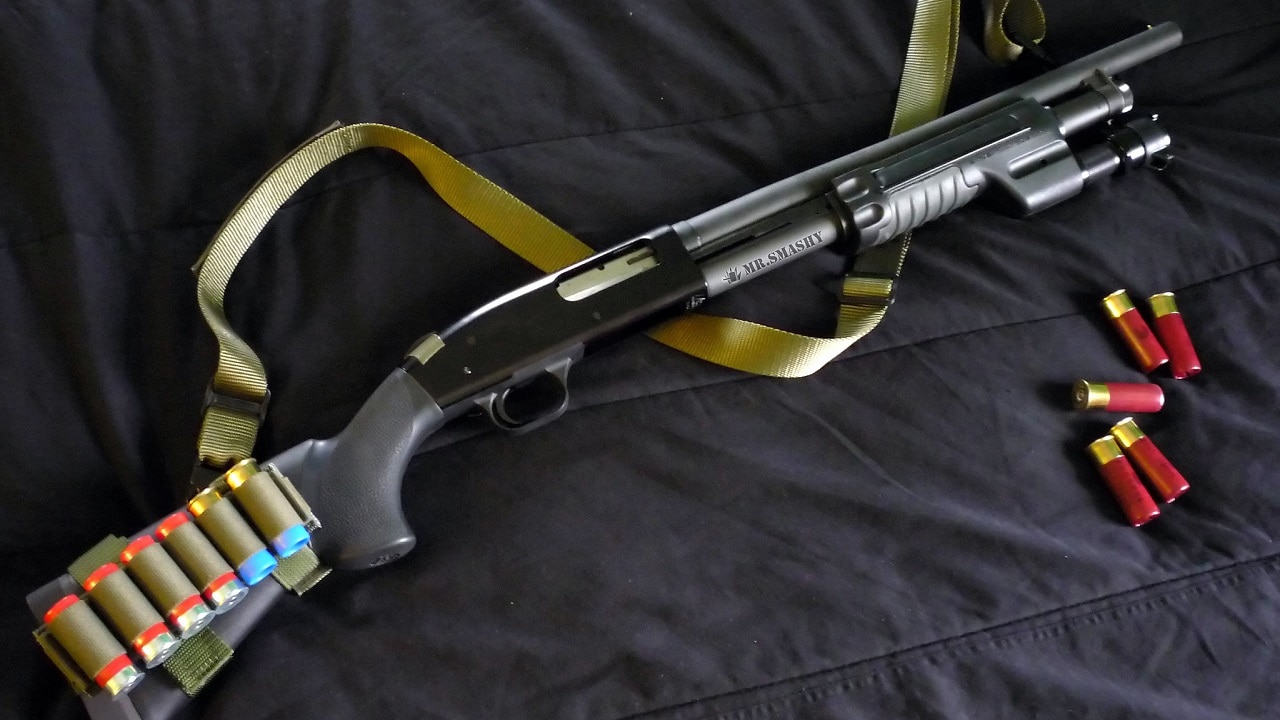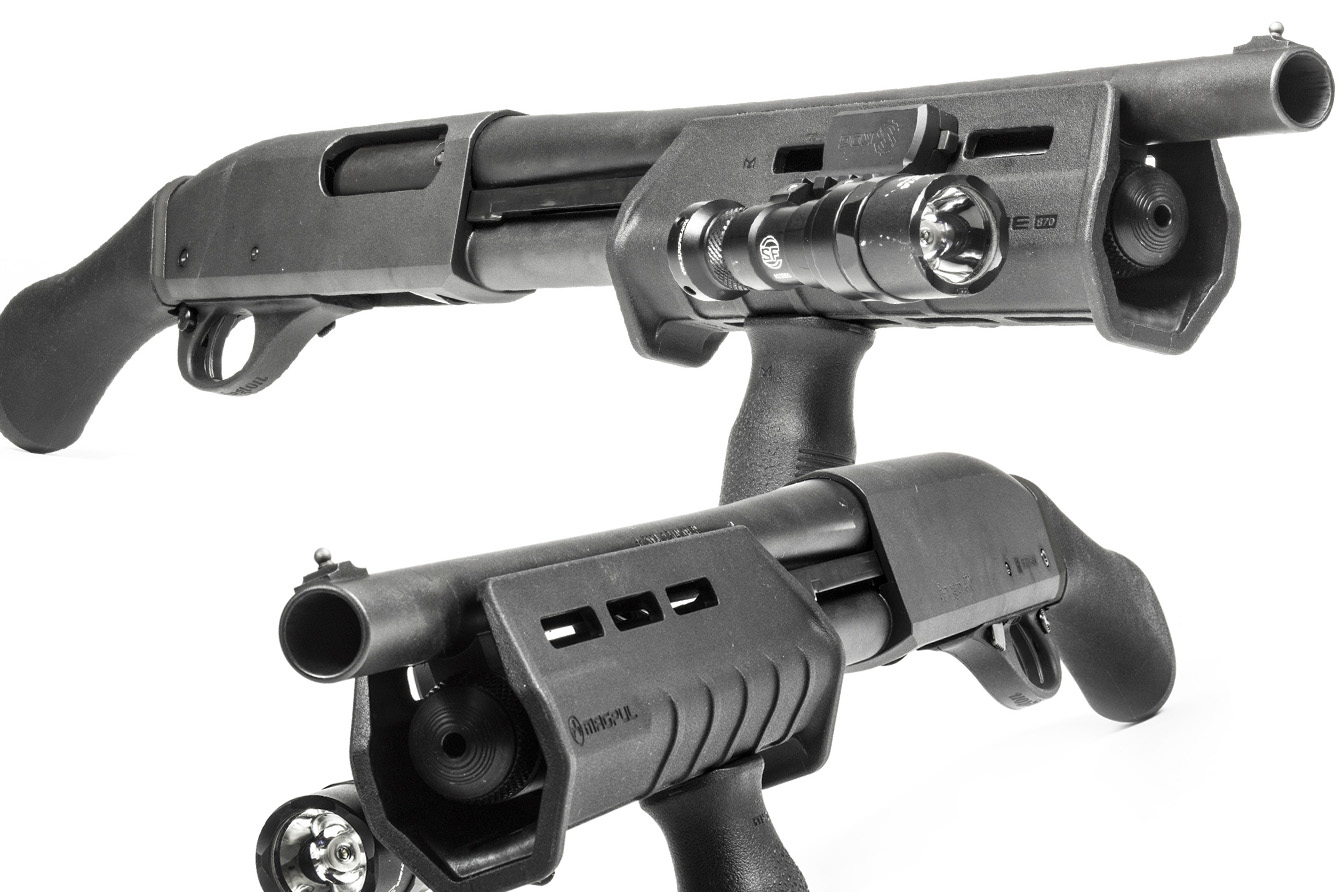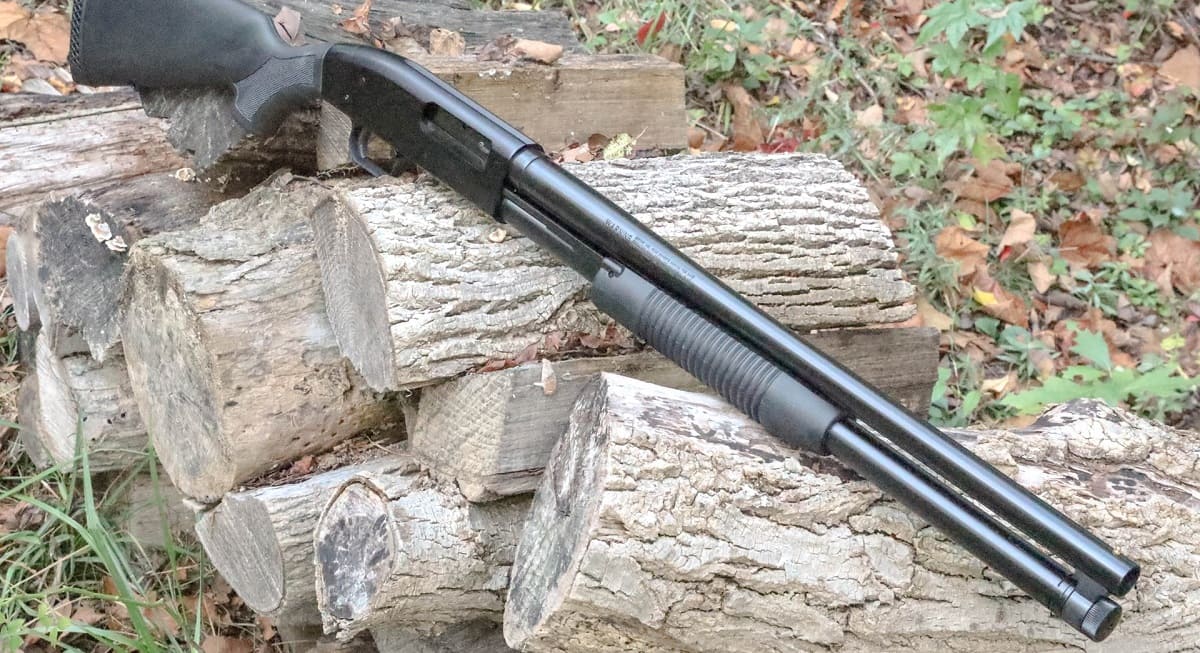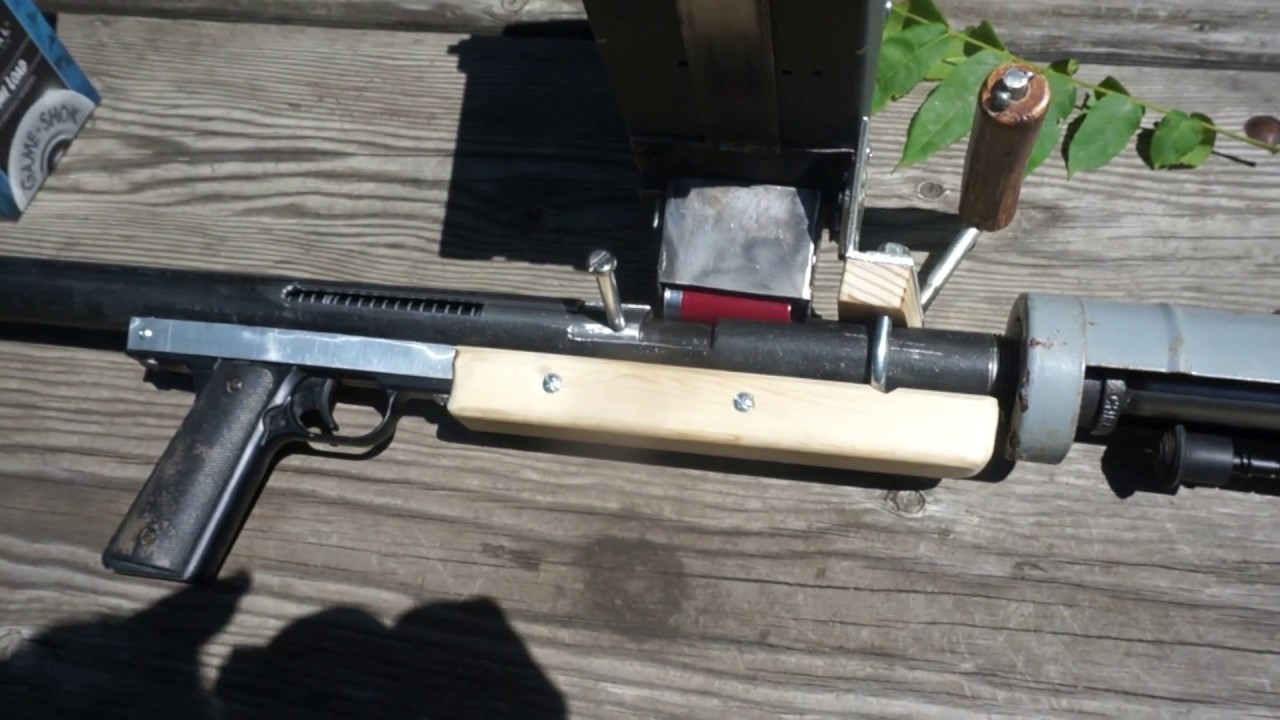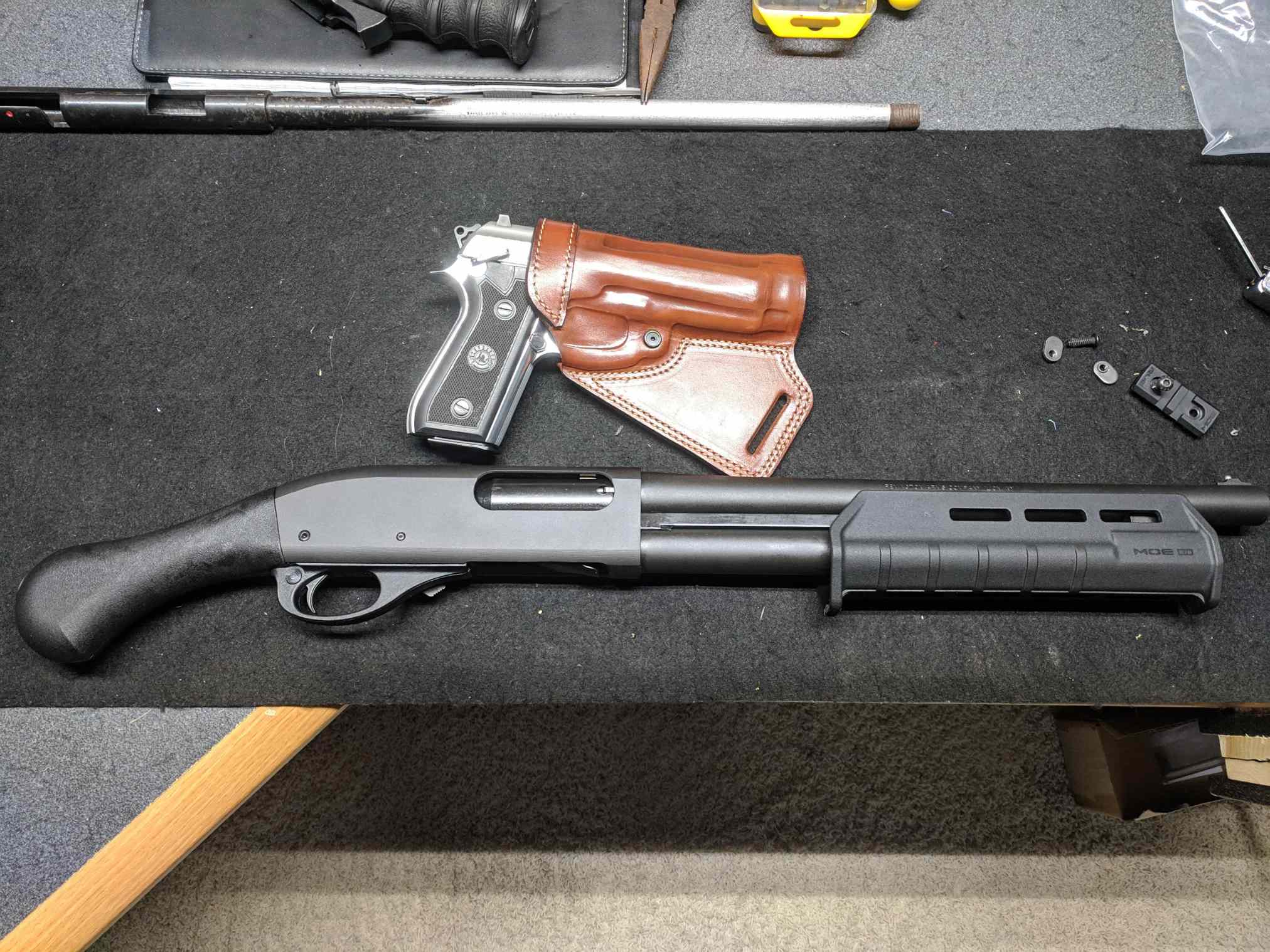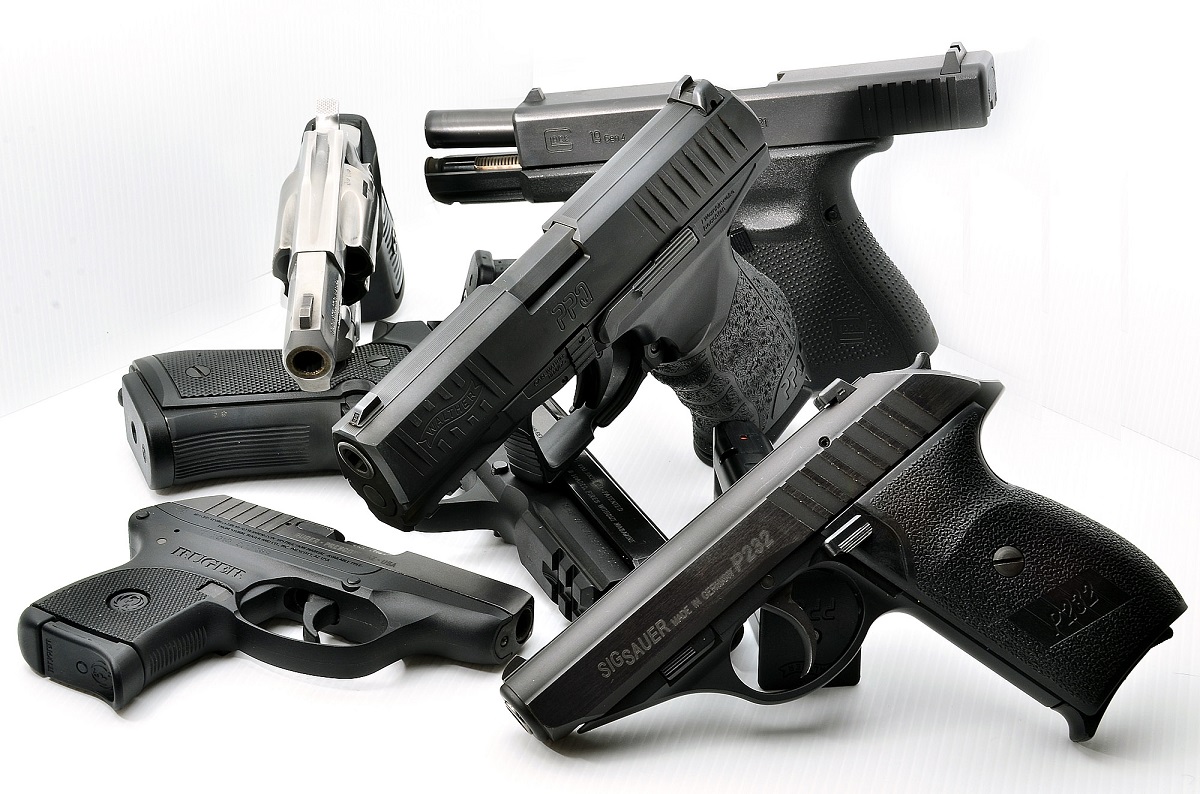Home>Home Security and Surveillance>How To Turn A Hunting Shotgun Into A Home Defense Shotgun
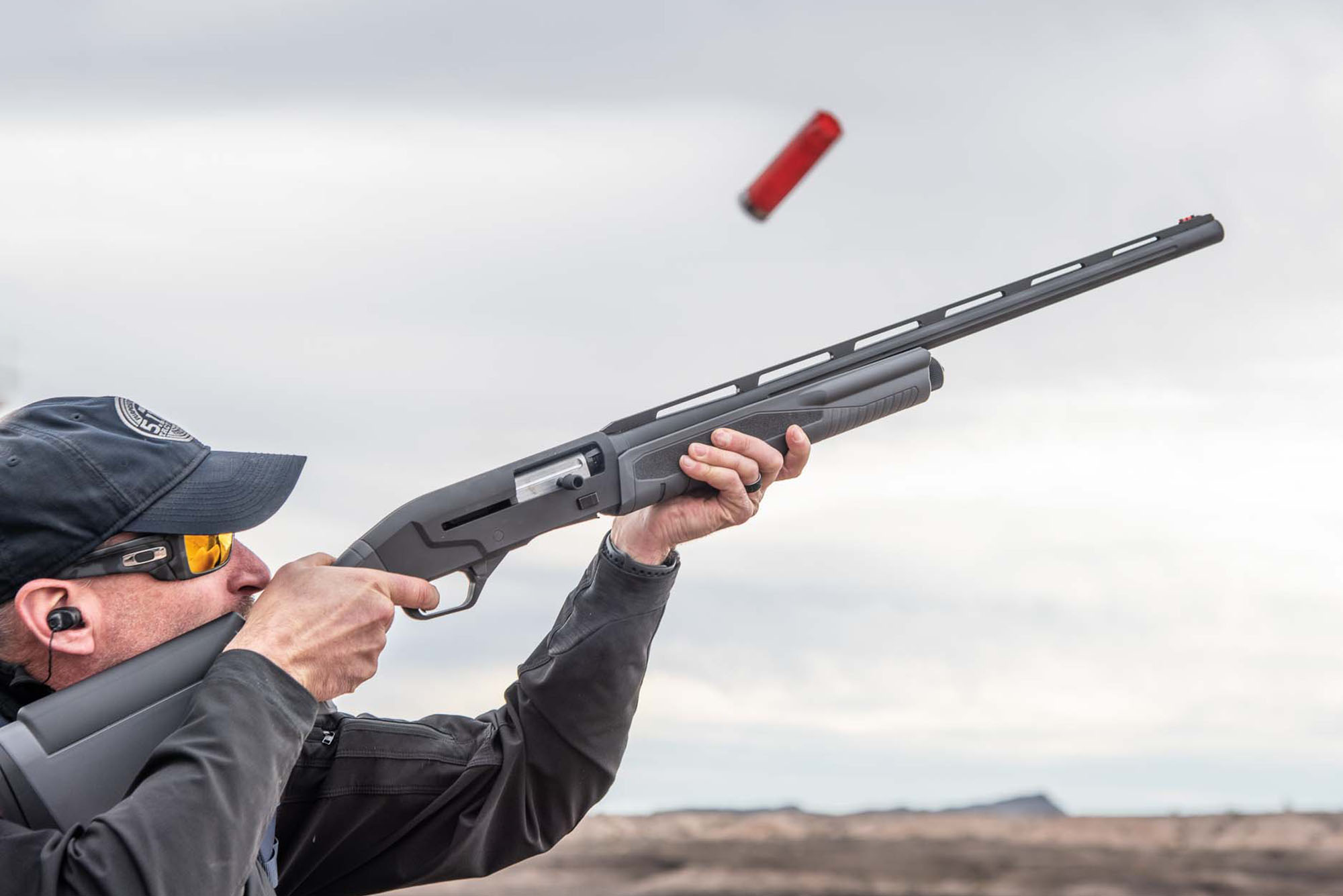

Home Security and Surveillance
How To Turn A Hunting Shotgun Into A Home Defense Shotgun
Modified: March 6, 2024
Looking to enhance your home security and surveillance? Discover how to transform your hunting shotgun into a reliable home defense shotgun for ultimate peace of mind.
(Many of the links in this article redirect to a specific reviewed product. Your purchase of these products through affiliate links helps to generate commission for Storables.com, at no extra cost. Learn more)
Introduction
When it comes to protecting your home and family, having a reliable and effective home defense shotgun is crucial. While shotguns are commonly used for hunting, with a few modifications, they can be transformed into powerful tools for home security and surveillance. In this article, we will guide you through the process of turning a hunting shotgun into a home defense powerhouse.
Before we dive into the modifications, it’s essential to understand the advantages of using a shotgun for home defense. Shotguns deliver a wide spread of pellets, making it easier to hit targets in high-stress situations. They also have a significant amount of stopping power, which can deter potential intruders and provide a sense of security.
Now, let’s explore the steps to transform your hunting shotgun into a reliable home defense weapon that will keep your loved ones safe.
Key Takeaways:
- Transform your hunting shotgun into a reliable home defense powerhouse by choosing the right shotgun, modifying the stock, adjusting the barrel length, and adding essential accessories like a tactical light and side saddle shell holder.
- Enhance your home defense shotgun with a pistol grip, red dot sight, and increased magazine capacity to improve control, accuracy, and ammunition accessibility, ensuring the safety of your household.
Read more: How To Load A Shotgun For Home Defense
Step 1: Choose the Right Shotgun
The first step in turning a hunting shotgun into a home defense shotgun is selecting the right firearm. Ideally, you want to choose a shotgun that is reliable, easy to handle, and offers a suitable capacity for defensive purposes.
When it comes to gauge, the most popular choice for home defense shotguns is either 12 gauge or 20 gauge. Both gauges provide a good balance between power and recoil, allowing for effective close-quarters engagement. Make sure to choose a shotgun that you are comfortable with and can handle confidently.
Another factor to consider is the action type of the shotgun. Pump-action shotguns, such as the Remington 870 or Mossberg 500, are popular choices for home defense. They are renowned for their reliability and simplicity, making them easy to operate under stressful situations.
Additionally, consider the magazine capacity of the shotgun. For home defense purposes, it is advisable to have a shotgun with a larger capacity, such as one with a magazine extension. This allows you to have more ammunition readily available, reducing the need for frequent reloads.
Lastly, ensure that the shotgun you choose has a barrel length appropriate for your intended use. Generally, a barrel length between 18 to 20 inches is ideal for home defense shotguns. This length offers improved maneuverability in confined spaces while still maintaining sufficient accuracy and effectiveness.
By carefully selecting the right shotgun with the appropriate gauge, action type, magazine capacity, and barrel length, you lay the foundation for creating a reliable, potent home defense shotgun.
Step 2: Modify the Stock
One of the essential modifications to consider when turning a hunting shotgun into a home defense shotgun is modifying the stock. The stock plays a crucial role in providing stability and control while aiming and firing the shotgun.
There are several options available to modify the stock of your shotgun for optimal home defense performance:
- Adjustable Stock: Consider replacing the standard fixed stock with an adjustable stock. An adjustable stock allows you to customize the length of pull, ensuring a comfortable fit for your body size and shooting position. This can greatly enhance your accuracy and control.
- Pistol Grip Stock: Another option is to swap the stock with a pistol grip stock. A pistol grip provides a more ergonomic grip, allowing for better control and maneuverability of the shotgun. This type of stock is particularly useful when navigating tight spaces within the home.
- Recoil Reducing Stock: To mitigate recoil and enhance comfort during rapid-fire situations, consider installing a recoil-reducing stock. These stocks utilize various technologies, such as recoil pads or spring systems, to absorb recoil energy, reducing muzzle rise and improving follow-up shot accuracy.
- Folding Stock: If you need to store the shotgun in a compact space, a folding stock might be a viable option. A folding stock allows you to quickly fold the stock, reducing the overall length of the shotgun for easy storage or transport. However, ensure that the folding stock you choose maintains stability and reliability when unfolded.
Before making any modifications to the stock, ensure that you comply with local laws and regulations. Certain jurisdictions might have restrictions on stock modifications, especially those that convert a shotgun into a more compact form.
By modifying the stock of your hunting shotgun, you can significantly improve its usability and maneuverability for home defense purposes, ensuring that you have a secure and comfortable grip when protecting your home and loved ones.
Step 3: Adjust the Barrel Length
Adjusting the barrel length of your hunting shotgun is an important step in transforming it into a suitable home defense weapon. The barrel length plays a crucial role in the overall balance, maneuverability, and effectiveness of the shotgun in close-quarters engagements.
Here are a few considerations when adjusting the barrel length:
- Legal Requirements: Before making any modifications, ensure that you are compliant with local laws regarding barrel length. Different jurisdictions might have restrictions on minimum barrel length requirements for shotguns, typically ranging from 18 to 20 inches for home defense purposes.
- Reducing Barrel Length: If your shotgun has a longer barrel, you can consider shortening it to the desired length. However, it is recommended to consult a professional gunsmith to ensure the alteration is done safely and in compliance with local regulations. They will have the expertise and tools required to shorten the barrel properly.
- Benefits of Shorter Barrel: A shorter barrel provides better maneuverability in tight spaces, making it easier to navigate hallways or corners within your home. It also improves the overall balance of the shotgun, reducing the weight towards the front and enhancing handling capabilities.
- Impact on Accuracy: While shortening the barrel can improve maneuverability, it may affect the accuracy of the shotgun to some degree. However, for typical home defense distances, the impact on accuracy is minimal and often outweighed by the benefits of enhanced maneuverability.
- Considerations for Shotguns with Chokes: If your shotgun has removable chokes, it’s important to understand that shortening the barrel will likely change the characteristics of the choke and the shotgun’s patterning. You may need to experiment with different chokes to optimize the shotgun for home defense situations.
Remember, always follow proper safety measures when modifying a shotgun’s barrel length. Seek professional guidance to ensure that the modifications comply with local laws and regulations, preserving the reliability and functionality of the firearm.
By adjusting the barrel length of your hunting shotgun, you can optimize its usability and maneuverability for home defense scenarios, providing you with a reliable tool to protect your household.
Step 4: Install a Tactical Light
Installing a tactical light on your home defense shotgun is crucial for identifying potential threats in low-light or dark environments. A tactical light not only illuminates the area but also provides a tactical advantage by disorienting intruders and allowing for more precise target acquisition.
Here are some considerations when installing a tactical light:
- Mounting Options: There are various mounting options available for attaching a tactical light to your shotgun. One popular method is using a dedicated light mount that attaches to the barrel, magazine tube, or the accessory rail if your shotgun has one. This ensures a secure and stable attachment while minimizing interference with other accessories.
- Light Output: When selecting a tactical light, consider its output in terms of brightness and beam pattern. Opt for a light with a sufficient amount of lumens to effectively illuminate the area. A focused beam or adjustable beam pattern can help to identify potential threats and provide better target acquisition.
- Activation Methods: Tactical lights typically offer various activation methods, such as push-button switches, pressure switches, or integrated switches. Consider your preference and ease of use when selecting the activation method. A pressure switch allows for momentary activation, while a push-button switch provides a more traditional on/off control.
- Power Source: Determine the power source for your tactical light. Many lights use CR123A or AA batteries, while some models have rechargeable options. Consider the availability and convenience of the power source and decide which option best suits your needs.
- Light Placement: Mount the tactical light in a position that allows for easy access and quick activation. Consider a location that aligns with your natural hand placement on the shotgun, ensuring that the light can be activated without compromising your grip or aim.
Once you have selected and installed a tactical light, be sure to practice using it in low-light conditions. Familiarize yourself with the activation method and learn to use the light effectively alongside your shotgun for home defense scenarios.
By installing a tactical light on your home defense shotgun, you greatly enhance your ability to identify potential threats, react quickly, and maintain situational awareness, giving you a significant advantage in critical situations.
Consider replacing the long hunting barrel with a shorter one for better maneuverability in tight spaces. Also, add a flashlight and a red dot sight for quick target acquisition in low light conditions.
Read more: How To Pick A Shotgun For Home Defense
Step 5: Add a Pistol Grip
Adding a pistol grip to your home defense shotgun can greatly improve its ergonomics and handling, enhancing your control and maneuverability in high-stress situations. A pistol grip provides a more natural and comfortable grip, allowing for better recoil management and quicker target acquisition.
Here are some considerations when adding a pistol grip to your shotgun:
- Compatibility: Ensure that the pistol grip you choose is compatible with your specific shotgun model. Different shotguns may have different grip attachment methods, such as direct bolt-on or installation through an adapter. Consult the manufacturer’s guidelines or seek professional assistance if needed.
- Material and Texture: Select a grip that is made of durable materials, such as polymer or rubber, to withstand the rigors of home defense use. Consider a texture that provides a secure and comfortable grip, even in wet or sweaty conditions, to maintain control of the shotgun.
- Ergonomics: Look for a pistol grip that offers a natural and ergonomic design, allowing for a comfortable and consistent hand position. This will ensure proper alignment of your wrist and forearm, reducing fatigue and improving shot accuracy.
- Recoil Reduction: Some pistol grips are designed with built-in recoil reduction features, such as cushioning pads or shock-absorbing materials. These can help mitigate the felt recoil, making the shotgun more manageable during rapid-fire situations.
- Legal Considerations: Before adding a pistol grip, ensure that you comply with local laws and regulations regarding firearm modifications. Some jurisdictions may have restrictions on certain types of pistol grips or require specific permits for installation.
Once you have added a pistol grip to your shotgun, take the time to familiarize yourself with the new grip and practice your grip and stance during handling and shooting drills. This will help build muscle memory and ensure that you can confidently and effectively handle your shotgun in home defense scenarios.
By adding a pistol grip to your home defense shotgun, you can significantly enhance your control and maneuverability, enabling you to respond swiftly and accurately to potential threats, and ensuring the safety of yourself and your loved ones.
Step 6: Enhance the Magazine Capacity
Enhancing the magazine capacity of your home defense shotgun can provide you with more ammunition ready to use in a critical situation. A higher magazine capacity means fewer reloads, allowing you to maintain a continuous and effective response to potential threats.
Here are some options to consider for enhancing the magazine capacity of your shotgun:
- Extended Magazine Tube: One common method to increase the magazine capacity is by replacing the existing magazine tube with an extended one. These aftermarket extensions can add several rounds to the shotgun’s original capacity. Ensure that the extended magazine tube is compatible with your specific shotgun model and follow the manufacturer’s instructions for installation.
- Magazine Tube Clamp: Another option to consider is adding a magazine tube clamp. This accessory attaches to the magazine tube and provides a secure grip on the shotgun, preventing unintentional removal of the extension. In addition to enhancing the magazine capacity, a magazine tube clamp can also provide a more stable platform for mounting other accessories, such as a sling or a flashlight.
- Drum Magazine: For certain shotgun models, drum magazines are available as an alternative to the traditional tubular magazine. Drum magazines offer significantly higher round capacity, providing a plentiful supply of ammunition for prolonged engagements. However, be sure to verify the legality of using drum magazines in your jurisdiction, as they may be subject to restrictions.
- Reliability and Functionality: When enhancing the magazine capacity, it is crucial to ensure that the modifications do not compromise the reliability and functionality of the shotgun. Test the functionality of the extended magazine or drum magazine to ensure smooth feeding and reliable operation.
After enhancing the magazine capacity, familiarize yourself with the new configuration and practice reloading drills to ensure smooth and efficient magazine changes. Remember, while having a higher magazine capacity is advantageous, it is equally important to train and maintain proficiency with reloading techniques.
By enhancing the magazine capacity of your home defense shotgun, you can increase your ability to engage threats without interruption, providing you with a greater advantage in protecting yourself and your loved ones.
Step 7: Attach a Red Dot Sight
Attaching a red dot sight to your home defense shotgun can greatly improve your accuracy and target acquisition in a high-stress situation. A red dot sight offers a clear and illuminated aiming point that allows for quick and precise aiming, even in low-light conditions.
Consider the following when attaching a red dot sight to your shotgun:
- Compatibility: Ensure that the red dot sight you choose is compatible with your specific shotgun model. Look for mounting options that are designed for shotguns, such as a Picatinny or Weaver rail. Some shotguns may require additional adapters or mounting solutions.
- Size and Weight: Opt for a red dot sight that is compact and lightweight. Shotguns are often used in close-quarters engagements, so having a low-profile sight that doesn’t add excessive weight is important for maintaining balance and maneuverability.
- Reticle Style: Consider the reticle style that best suits your needs. Choose a red dot sight with a clear and crisp dot reticle that is easy to see and align with the target. Some red dot sights may offer multiple reticle options, such as crosshairs or multiple dots, providing flexibility based on your preferences.
- Battery Life: Pay attention to the battery life of the red dot sight. You want a sight that offers a long-lasting battery or has the capability for quick and easy battery changes to ensure that your sight is always operational when you need it most.
- Adjustability: Look for a red dot sight that offers easy and precise adjustment of windage and elevation. This allows you to zero the sight to your preferred distance and compensate for any aiming errors, providing consistent and accurate shots.
Once the red dot sight is attached, take the time to familiarize yourself with its operation. Practice acquiring targets quickly and accurately, and ensure that the sight is properly zeroed to your desired distance.
By attaching a red dot sight to your home defense shotgun, you can significantly enhance your aiming and target acquisition abilities, giving you a decisive edge in critical situations where split-second decisions matter.
Step 8: Install a Side Saddle Shell Holder
Installing a side saddle shell holder on your home defense shotgun is a practical and convenient way to have additional ammunition readily accessible. A side saddle shell holder allows you to carry extra rounds directly on the shotgun, ensuring quick and easy reloads when needed.
Consider the following when installing a side saddle shell holder:
- Capacity: Choose a side saddle shell holder that offers an appropriate capacity for your needs. The most common options range from 4 to 6 rounds, but you can find side saddles with even higher capacities if desired. Consider the balance between carrying enough rounds and maintaining the overall weight and maneuverability of the shotgun.
- Material and Construction: Opt for a side saddle shell holder that is made of durable and lightweight materials, such as polymer or aluminum. Look for a design that securely holds the shells in place, yet allows for quick and effortless removal when reloading. Ensure that the construction of the side saddle is robust to withstand the rigors of firearm use.
- Installation: Follow the manufacturer’s instructions for proper installation of the side saddle shell holder. Most side saddles attach securely to the receiver or the shotgun’s side rail using screws or adhesive backing. Verify that the installation method is compatible with your specific shotgun model.
- Accessibility: Position the side saddle shell holder in a location that is easily accessible for quick reloads. Consider mounting it on the side of the receiver or the stock, depending on your preferred shooting style and hand placement during reloads.
- Balance and Handling: Take into account the balance and handling of the shotgun with the side saddle shell holder installed. Ensure that the additional weight does not negatively impact your ability to maneuver and aim the shotgun effectively.
Once the side saddle shell holder is installed, practice reloading drills to familiarize yourself with the location and accessibility of the extra rounds. Ensure that you can quickly and smoothly grab shells from the side saddle and load them into the shotgun’s chamber.
By installing a side saddle shell holder on your home defense shotgun, you can have immediate access to additional rounds, reducing the need for time-consuming reloads and ensuring you have an ample supply of ammunition during critical situations.
Conclusion
Transforming a hunting shotgun into a home defense powerhouse requires careful consideration and a few strategic modifications. By following the steps outlined in this guide, you can create a reliable and effective home defense shotgun that will help protect your loved ones and secure your property.
From choosing the right shotgun and making alterations to the stock and barrel length, to adding accessories like a tactical light, pistol grip, red dot sight, and side saddle shell holder, each step works together to enhance the overall performance and usability of your shotgun for home defense purposes.
It is important to remember that while these modifications can enhance the functionality of your shotgun, they should always be done in compliance with local laws and regulations. Before making any alterations, consult with professionals or experts to ensure that your modifications are legal and safe.
Once you have completed the necessary modifications, it is crucial to train regularly with your home defense shotgun. Familiarize yourself with the new features and practice reloading, aiming, and shooting in various scenarios. Regular training will help build muscle memory and increase your proficiency, ensuring that you can effectively handle your shotgun in critical situations.
Remember, the goal of transforming your hunting shotgun into a home defense shotgun is to have a reliable tool that provides security and peace of mind. Your home defense shotgun should empower you to protect your home and loved ones while providing a deterrent to potential intruders.
By following the steps outlined in this guide and continuously honing your skills through practice and training, you can have confidence in your ability to defend your home effectively and respond to potential threats with a capable and optimized home defense shotgun. Stay safe and keep your home secure.
Frequently Asked Questions about How To Turn A Hunting Shotgun Into A Home Defense Shotgun
Was this page helpful?
At Storables.com, we guarantee accurate and reliable information. Our content, validated by Expert Board Contributors, is crafted following stringent Editorial Policies. We're committed to providing you with well-researched, expert-backed insights for all your informational needs.
